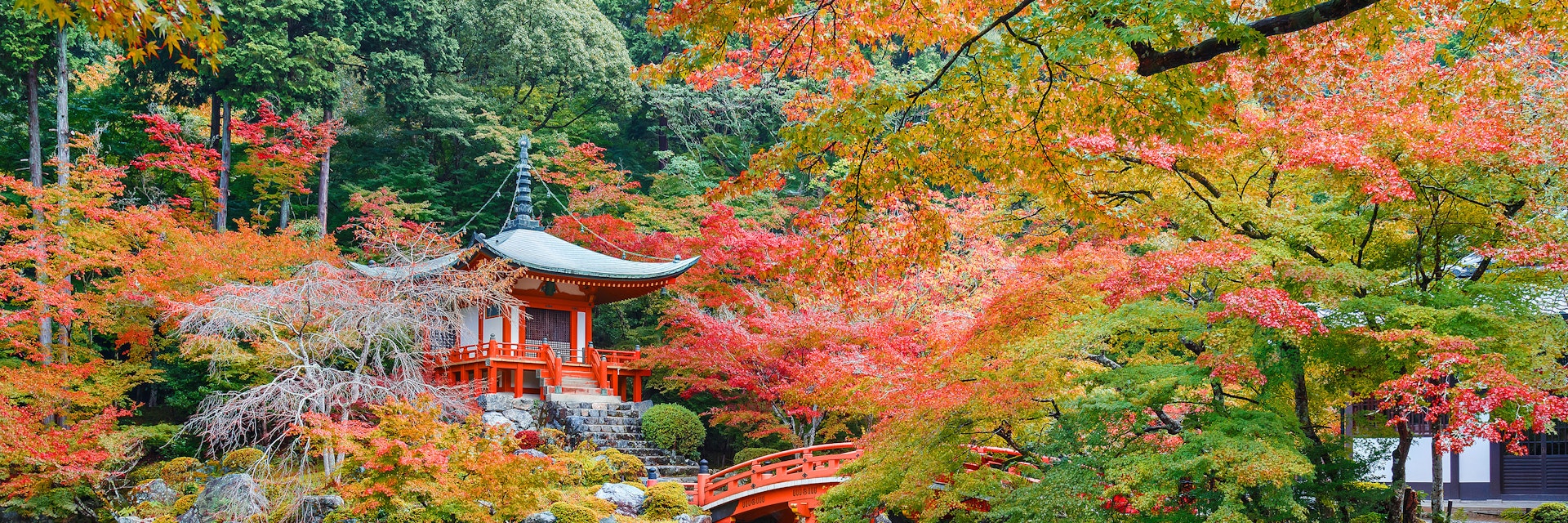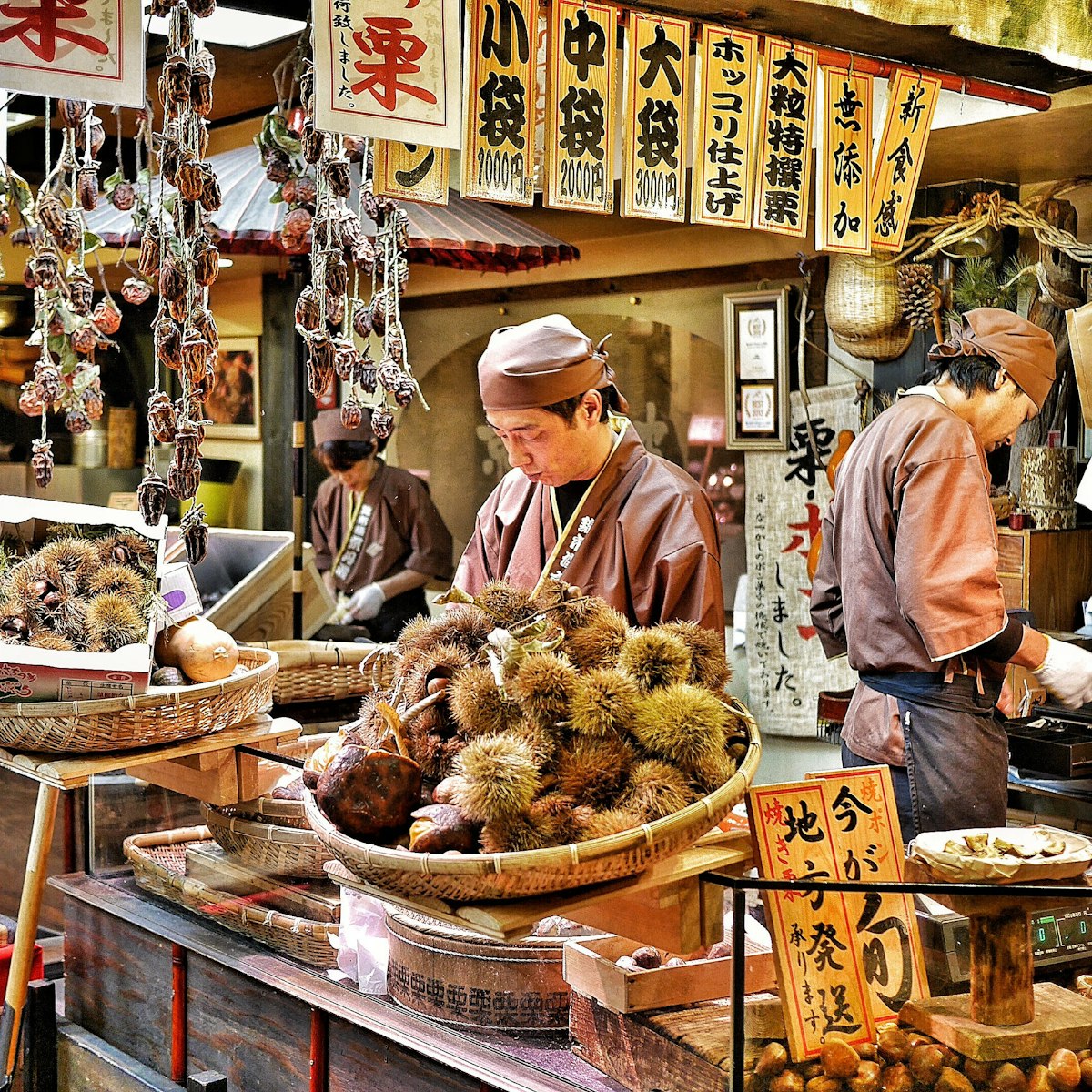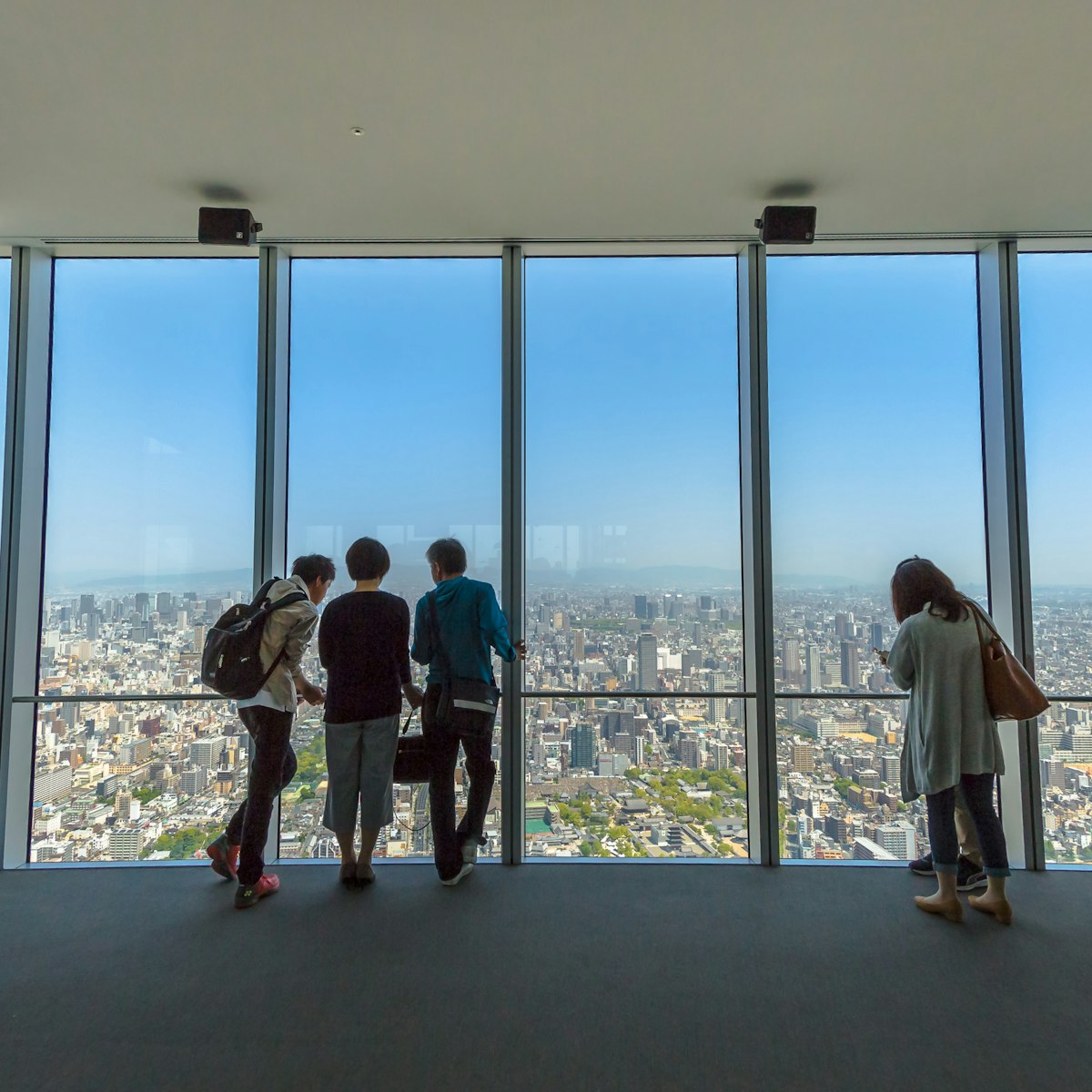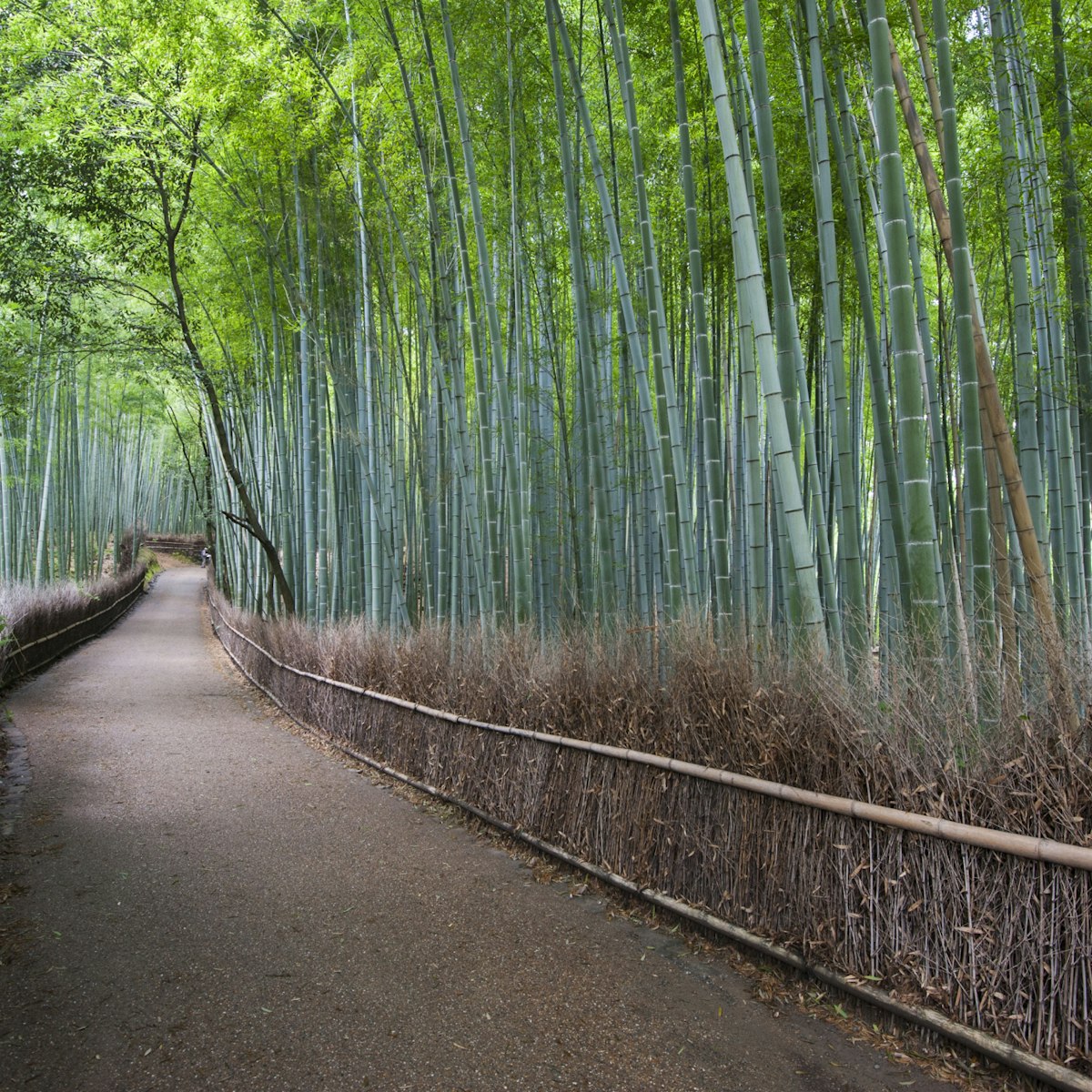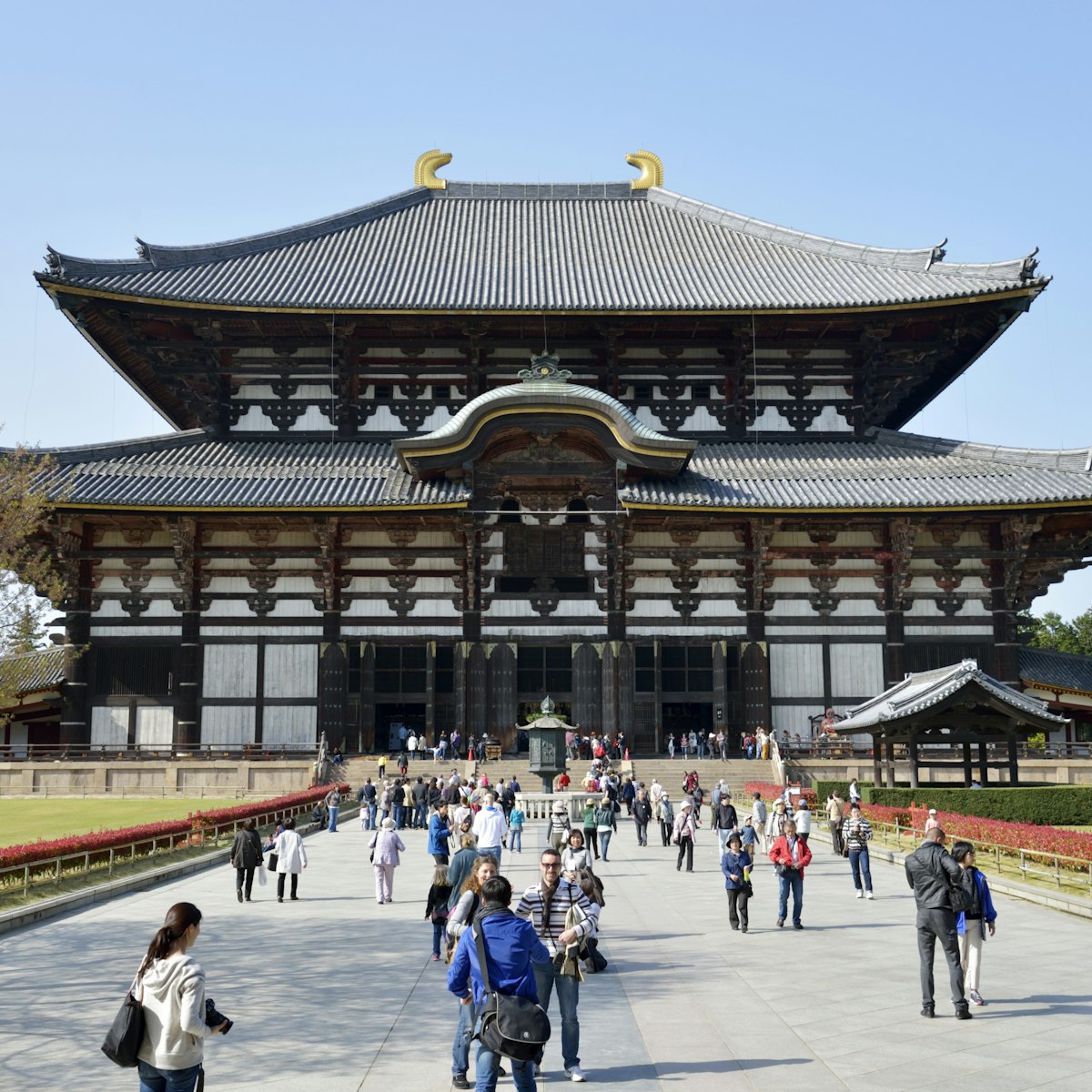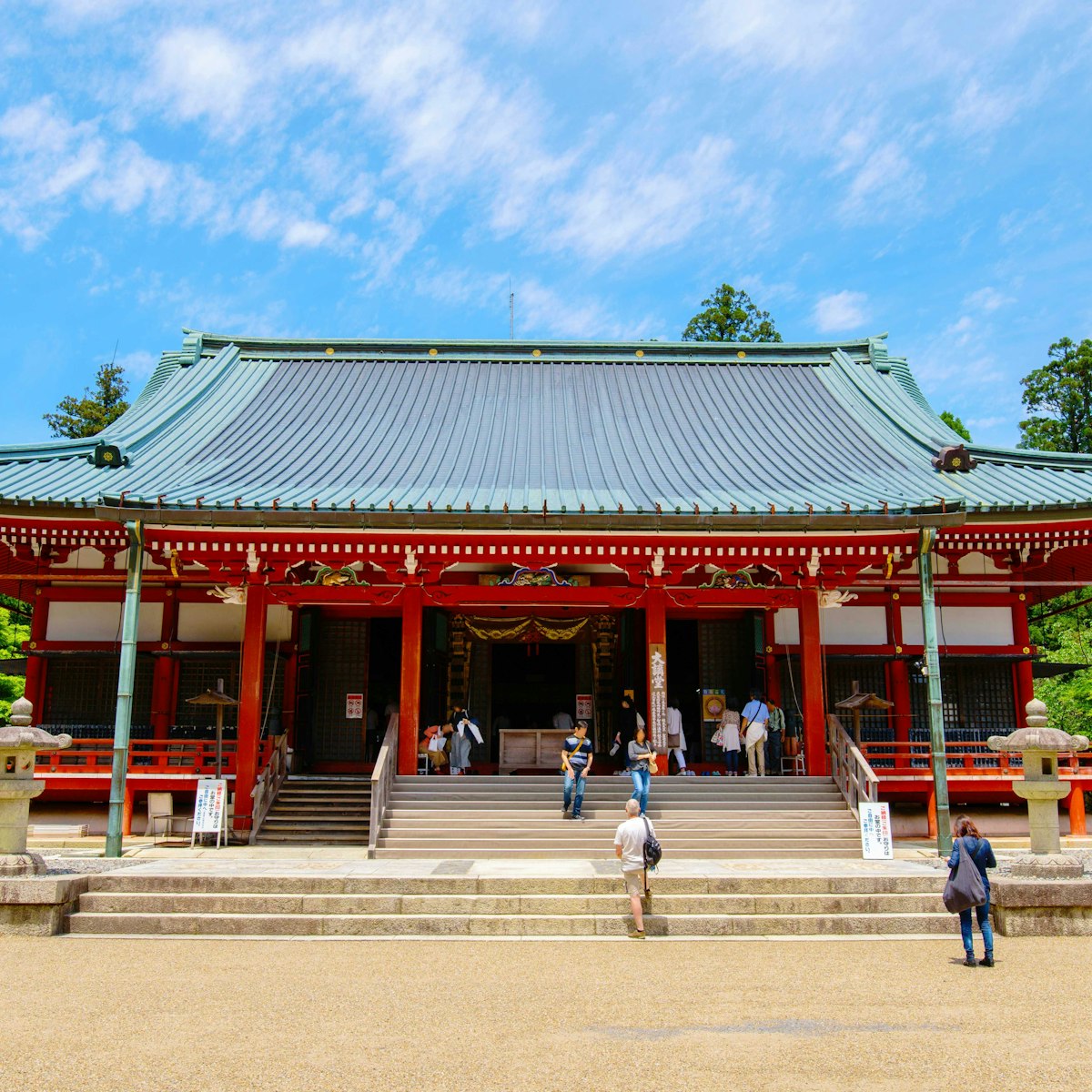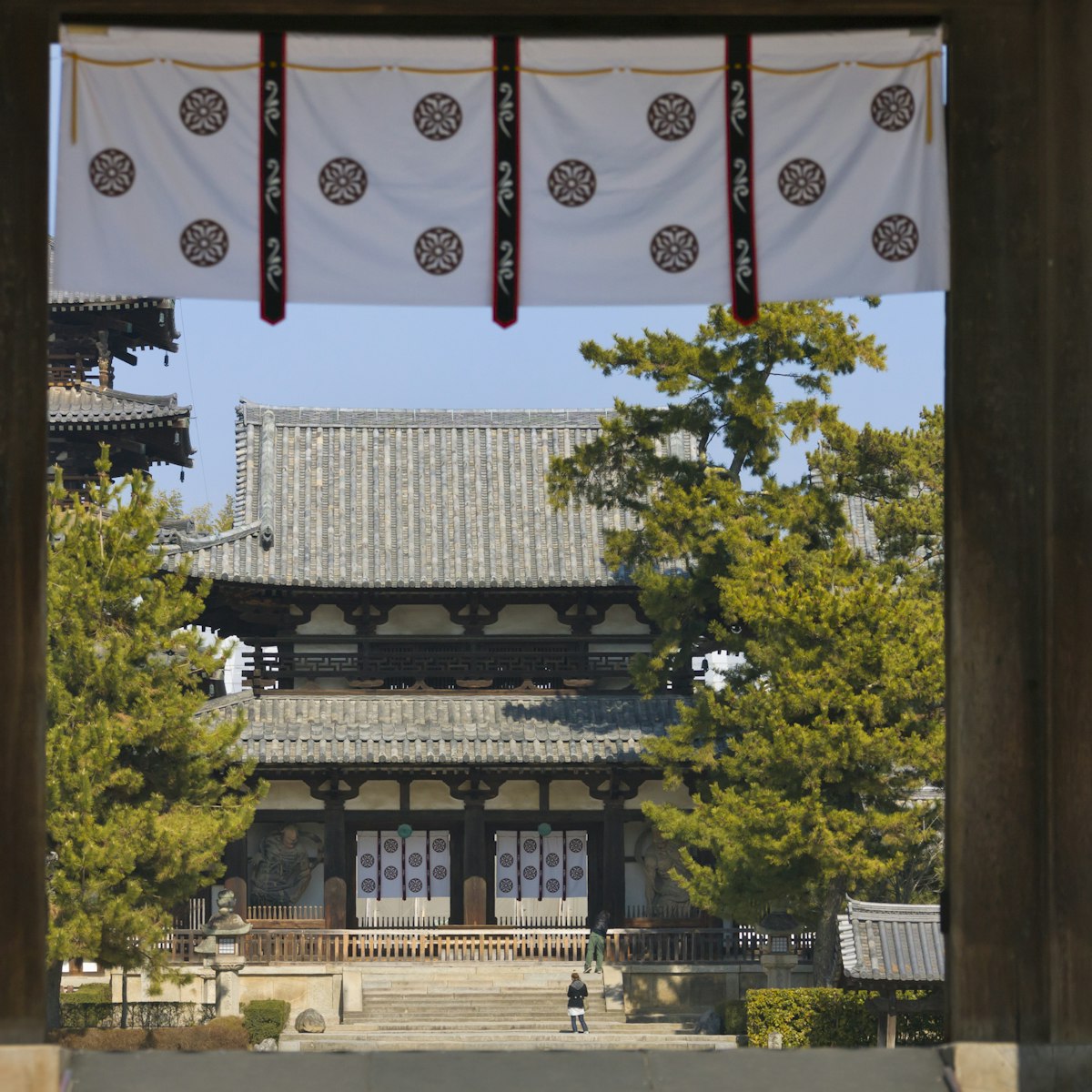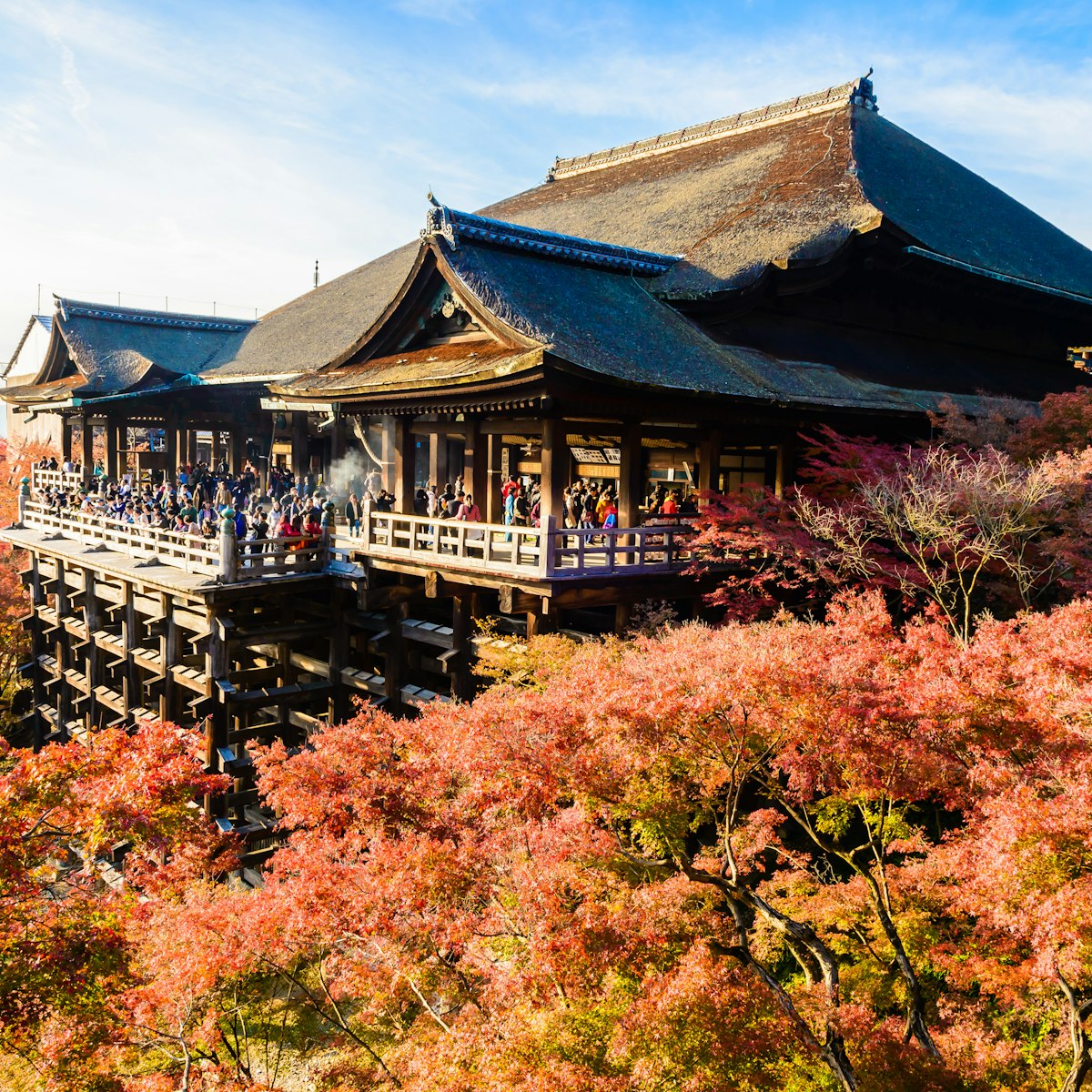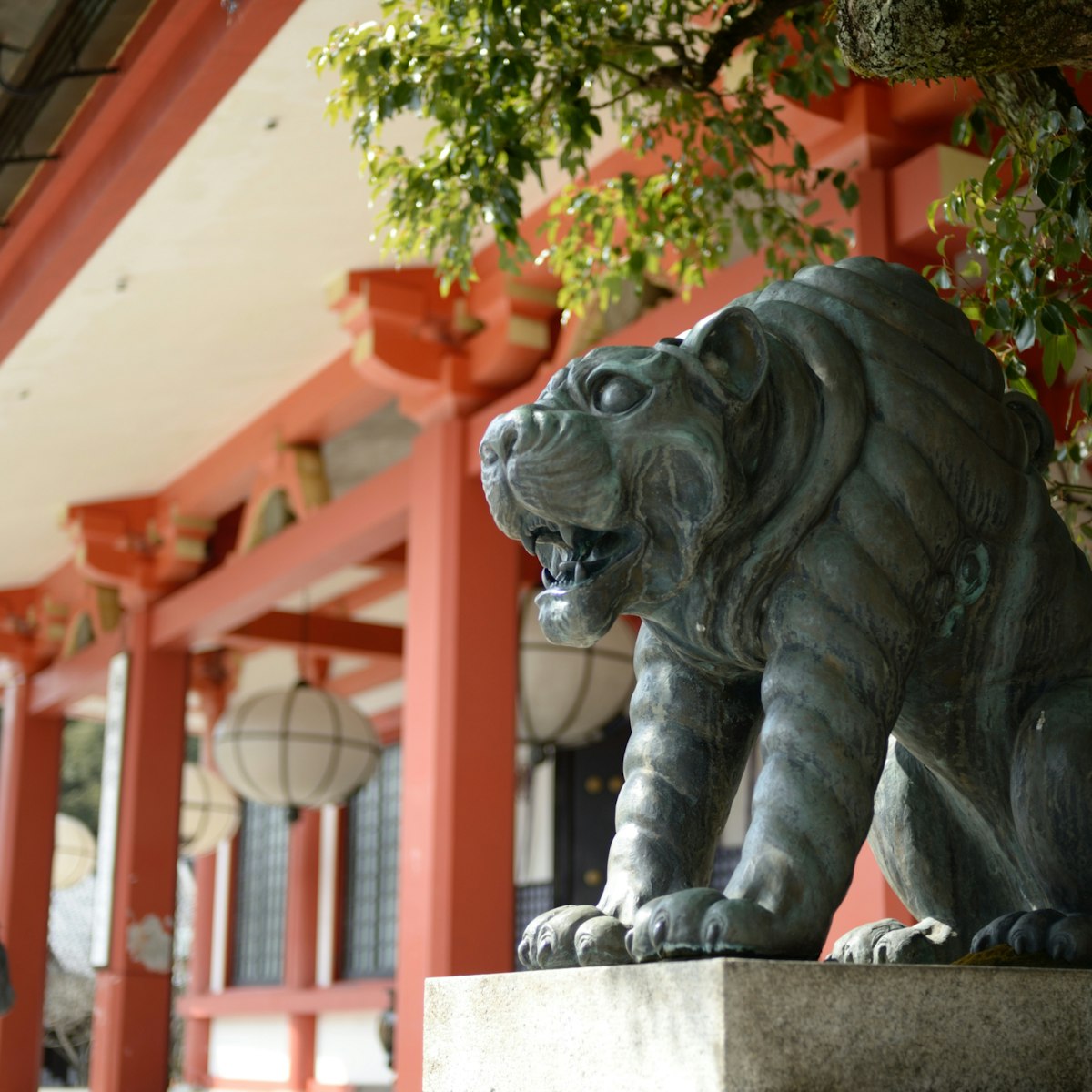Daigo-ji is a World Heritage–listed sprawling temple complex located in the Daigo district of Kyoto, which lies on the east side of the Higashiyama mountains, accessible by the Tōzai subway line. Outside of the cherry-blossom season (early April), it's not a high-priority destination, but it makes a good half-day trip for those who like hiking and want a break from the more famous temples in the city centre.
Daigo-ji was founded in 874 by Shobo, who gave it the name Daigo (meaning ‘the ultimate essence of milk’). This refers to the five periods of Buddha’s teaching, which were compared to the five forms of milk prepared in India; the highest form is called daigo in Japanese.
The temple was expanded into a vast complex on two levels, Shimo Daigo (lower) and Kami Daigo (upper). Kami Daigo is atop Daigo-yama, behind the temple. During the 15th century those buildings on the lower level were destroyed, with the sole exception of the five-storey pagoda (Garan). Built in 951, this pagoda is treasured as the oldest of its kind in Japan and is the oldest existing building in Kyoto.
In the late 16th century, Hideyoshi took a fancy to Daigo-ji and ordered extensive rebuilding. It is now one of the Shingon school’s main temples. To explore Daigo-ji thoroughly and at a leisurely pace, mixing some hiking with your temple-viewing, you will need at least half a day.
The subtemple Sampō-in is a fine example of the amazing opulence of that period. The Kanō paintings and the garden are special features.
From Sampō-in it’s a steep and tiring one-hour climb up to Kami Daigo. To get here, walk up the large avenue of cherry trees, through the Niō-mon gate, out the back gate of the lower temple, up a concrete incline and into the forest, past the pagoda.
To get to Daigo-ji, take the Tōzai line subway east from central Kyoto to the Daigo stop, and walk east (towards the mountains) for about 10 minutes; there are signs pointing the way. Make sure that the train you board is bound for Rokujizō, as some head to Hama-Ōtsu instead.
